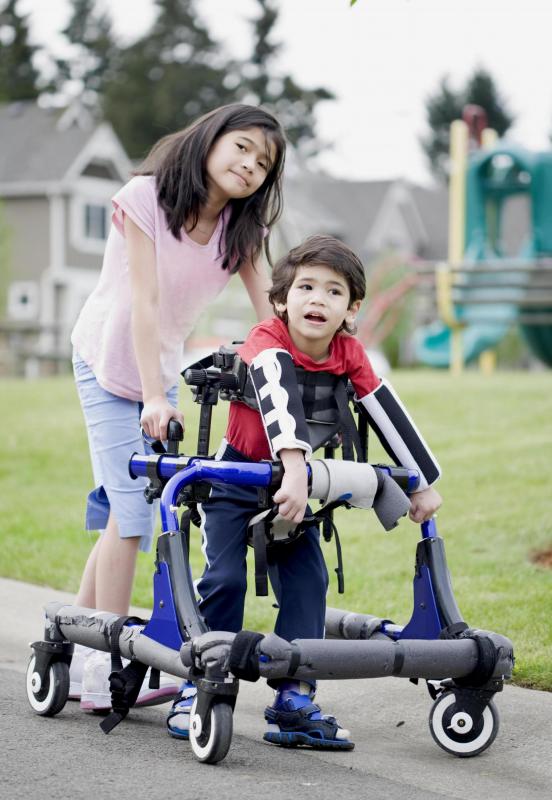At WiseGEEK, we're committed to delivering accurate, trustworthy information. Our expert-authored content is rigorously fact-checked and sourced from credible authorities. Discover how we uphold the highest standards in providing you with reliable knowledge.
What is a Selective Dorsal Rhizotomy?
A selective dorsal rhizotomy (SDR) is a surgical procedure used to treat cerebral palsy, a disorder in which development is delayed, neurological function is affected, and patients experience difficult or involuntary movement. This procedure involves cutting specific nerves in order to reduce spasticity, or abnormal muscle tightness. It is usually performed on young children between the ages of three to 10, however some older patients may also benefit from it. A selective dorsal rhizotomy is not a cure for cerebral palsy and will only provide partial relief of symptoms, however this may be sufficient to improve the quality of life of these patients.
Cutting specific sensory nerves in a selective dorsal rhizotomy actually improves gross motor function, because the brain of a child with cerebral palsy cannot control these nerves effectively, resulting in too much muscle contraction. Many children who undergo a selective dorsal rhizotomy may then successfully complete potty training and are able to sit for longer periods at a time, with improved posture. They often improve their speech, cognitive function increases, and the child may also become less irritable. Fine motor skills, such as hand-eye coordination, are not improved by this procedure.

Some children may be better candidates for a selective dorsal rhizotomy than others. Those with one of two specific types of cerebral palsy, spastic diplegics and severe spastic quadriparetics, are ideal candidates for an SDR. The former group are typically able to conduct some forward motion on their own, and will benefit from improved leg function with the surgery. Children in the latter category have extremely limited movement and surgery can typically ease daily care, provide for better muscle control, and allow them to sit for longer periods of time with more comfort. Candidates for a selective dorsal rhizotomy will undergo screenings by pediatric neurosurgeons, physical therapists, and other specialists.

Preparation for the surgery is typically extensive. The child's movements and abilities will be assessed by physical therapists who will develop a postoperative therapy program. Patients will also undergo a general physical examination to ensure that there is little to no risk of an adverse reaction to the anesthesia. It is helpful for parents or caregivers to discuss the procedure with the child. When the child has a basic understanding of the goals of the procedure, he may be more likely to cooperate fully with the physical therapist and other health care professionals.

After the child is rendered unconscious with general anesthesia, the surgeon will make an incision along the lower back. He will then test each tiny “rootlet” of each sensory nerve for any abnormalities, and those that present abnormal responses are cut. This entire procedure will take about four hours, and it is usually followed by 24 hours in an intensive care unit. Children may stay overnight in the hospital for about five days, with physical and occupational therapy beginning before they leave the hospital.
AS FEATURED ON:
AS FEATURED ON:















Discuss this Article
Post your comments